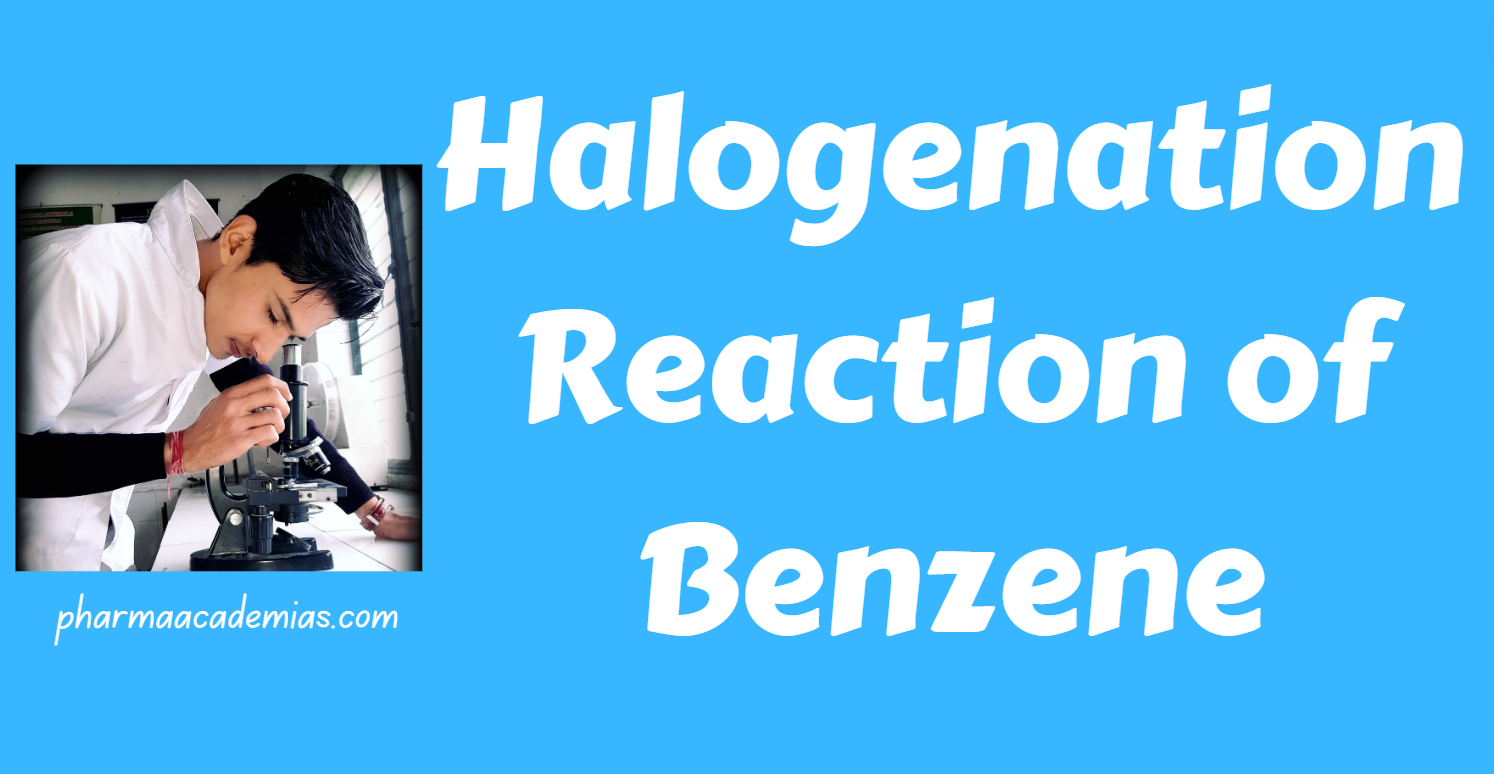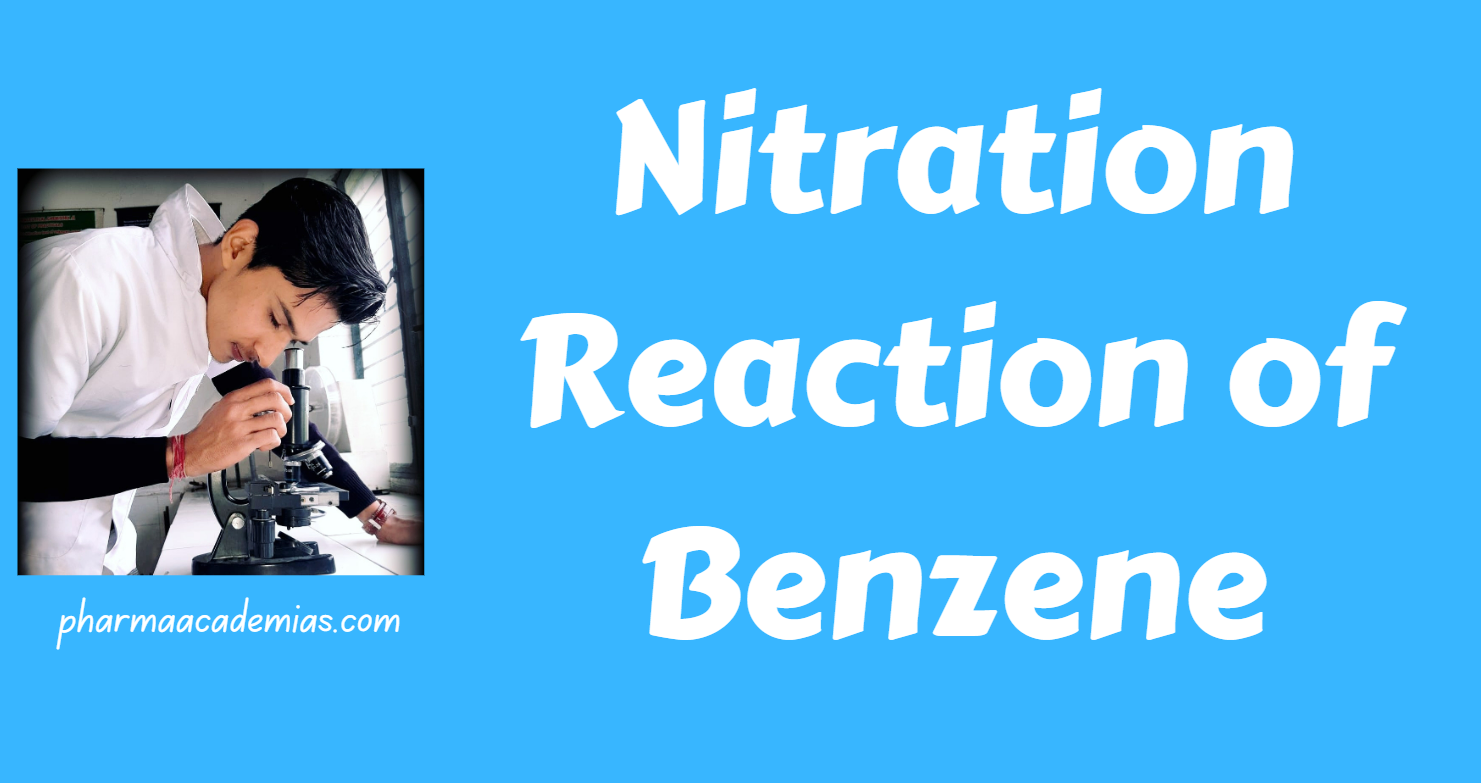1. Introduction Friedel-Crafts Alkylation is a reaction that involves the addition of an alkyl group to an aromatic ring. It is named after its discoverers, Charles Friedel and James Crafts. The general reaction can be represented as follows: Where (Ar) is an aromatic group, (R) is an alkyl group, and …
Reactions of benzene – Halogenation
Halogenation is a type of electrophilic aromatic substitution reaction where a halogen atom replaces a hydrogen atom in a benzene ring. This reaction is significant in organic synthesis and is a key example of the reactivity of benzene and its derivatives. Here’s a detailed note on the halogenation reaction of …
Sulphonation Reaction of Benzene
Sulphonation is a chemical reaction involving introducing a sulfonic acid group (SO3H) into a molecule. When applied to benzene, sulphonation results in the formation of benzenesulfonic acid. This reaction is highly significant in synthesizing various industrial chemicals, detergents, and dyes. Here is a detailed note on the sulphonation reaction of …
Reactions of benzene – Nitration
Nitration is a common reaction of benzene involving the substitution of a hydrogen atom in the benzene ring with a nitro group (NO2). The process typically requires a mixture of concentrated nitric acid (HNO3) and concentrated sulfuric acid (H2SO4) as a nitrating agent and catalyst, respectively. Below is a detailed …
Huckel’s Rule
Aromatic Compounds have played a significant role in the progress of mankind, with ongoing potential for further contributions. They are integral to the composition of computer parts, DVDs, and crucial components in automotive systems. Commonly used drugs like Aspirin and paracetamol belong to the category of Aromatic Compounds. The field …
📚Study of Cardiovascular system and organs with the help of charts, models, and specimens: Download Our Exclusive Educational Resource!
Greetings, fellow learners! We’re thrilled to share a valuable educational resource with you. Our latest download is designed to enhance your understanding and proficiency in Study of Cardiovascular system and organs with the help of charts, models, and specimens. Whether you’re a student, educator, or lifelong learner, this resource is …
Aromatic character of benzene
The aromatic character of benzene refers to its possession of certain distinctive features that classify it as an aromatic compound according to the rules of aromaticity. Aromaticity is a property observed in certain cyclic, planar, and fully conjugated organic compounds; benzene is a prototypical example. Here are the key aromatic …
Resonance in benzene
Resonance in benzene is a concept derived from molecular orbital theory and is used to describe the delocalization of π (pi) electrons in the benzene ring. Unlike localized double bonds suggested by Kekulé’s structural hypothesis, resonance emphasizes the idea that the actual electronic structure of benzene is a combination of …
Orbital picture of benzene
The orbital picture of benzene provides a more accurate representation of its electronic structure than Kekulé’s model. In the orbital picture, resonance describes the distribution of pi electrons in the benzene ring. The key idea is that the pi electrons are delocalized and exist as clouds over all six carbon …
Analytical, Synthetic, and Other Evidence in the Derivation of the Structure of Benzene
Analytical evidence in the derivation of the structure of benzene Analytical evidence played a crucial role in elucidating the structure of benzene, contributing to the understanding of its unique stability and aromatic properties. The analytical methods provided experimental data supporting the theoretical models proposed for benzene’s structure. Here’s a detailed …









